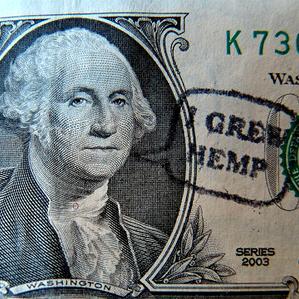While the bill is a great start, I'm a bit disappointed that hemp will be restricted to five California counties only and will not permit small backyard garden growing of industrial hemp. But it does make sense to focus the industry in a specific geographic area to start because sharing of expertise, equipment and processing facilities will be key to making the crop economically viable.
The next step required is approval by the state Assembly and since they passed this bill twice in the last few years, it is likely that it will pass again and will then be forwarded to Jerry Brown for his signature.
Source: LA Times Blogs
May 31, 2011
State lawmakers on Tuesday considered bills that would give politicians a better heads-up about ethics investigations, allow farmers to grow industrial hemp and require some animals to be microchipped.
The Senate voted on a raft of bills as it began taking up about 250 pieces of legislation ahead of Friday’s deadline for action. All of the measures approved by the Senate will now go to the state Assembly for consideration.
...
The Senate also voted to legalize farming of industrial hemp in five counties in California for use in making products such as paper and clothes.
Industrial hemp is a variety of cannabis sativa plant that has much lower levels of psychoactive chemicals than are found in marijuana.
"We are not letting our farmers get in on this growing action," said Sen. Mark Leno (D-San Francisco), adding that his SB 676 is "getting government out of the way so the free market can thrive here in California."
The measure, passed on a 22-14 vote, would allow farming of industrial hemp as part of an eight-year test program in Imperial, Kern, Kings, San Joaquin and Yolo counties.
-- Patrick McGreevy
The following copy on the same topic is from The Weed Blog:
The bill is being sponsored by California Senator Mark Leno who says that the state is missing a “golden opportunity” by not allowing farmers to produce hemp.
Leno addressed the issue on his blog last week:
If you like shopping at your local natural foods or specialty grocery store, you’ve probably noticed the growing popularity of hemp as an ingredient in food and skin care products. Hemp seed, which is high in protein and essential fatty acids, is found in everything from bread, energy bars and waffles to coffee and protein powder. Thanks to its natural antioxidants and moisturizing oil, hemp is also a common ingredient in soaps, shampoos and lotions. Perhaps your favorite T-shirt is even made of hemp, which is an excellent alternative to cotton.
Even though most of these consumer products are created by California companies, our farmers are prohibited from growing industrial hemp. Instead of buying hemp from local farmers, local manufacturers are importing thousands of dollars of hemp seed, oil and fiber from growers overseas.
California farmers are missing out on a golden opportunity to tap into the growing industrial hemp products business of food, clothing, shelter, paper and fuel, which would greatly benefit our state’s economy and family farmers. Industrial hemp is a perfect, environmentally sustainable crop for our state. It requires little or no pesticides and herbicides and produces two to four times more fiber than an acre of timber. Hemp grows quickly, can be harvested every 90 days and is a great rotational crop, especially for organic farmers.
 The Chronicle applauds Leno’s efforts to bring some common sense to the issue of hemp. Why should foreign growers and producers reap the profits from the hemp industry when we can grow it right here at home? Selling products made from hemp isn’t illegal in the U.S., so why should growing hemp be illegal?
The Chronicle applauds Leno’s efforts to bring some common sense to the issue of hemp. Why should foreign growers and producers reap the profits from the hemp industry when we can grow it right here at home? Selling products made from hemp isn’t illegal in the U.S., so why should growing hemp be illegal?Since hemp has no psychoactive properties and can’t be used as a drug like it’s cousin marijuana, I can only assume that big business is behind the push to keep it illegal. I’m sure the lumber companies and the paper companies and the cotton growers and the oil producers are sending every lobbyist they’ve got to try and stop this thing. Hemp is better, safe and cleaner than almost all of the products it would replace if legal.
If our country wasn’t run by mega-corporations whose only motivation is the BOTTOM LINE, we might be able to advance some of these ideas that would benefit the common good, but until then I’m afraid the dollar is king and we the people just don’t matter.
We urge California lawmakers and Governor Brown to end the madness and pass SB-676. It will bring in revenue for local farmers, gives us better products and help protect the environment. What’s the down side?
Article from The Chronicle and republished with special permission.



